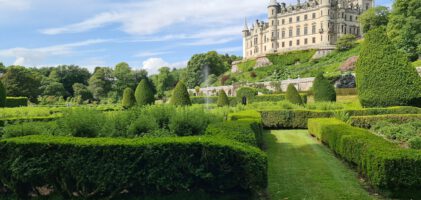Location: Golspie, Sutherland, Highlands of Scotland
kind of castle: 13th century tower house (built into the later mansion), extended to a mansion
today: open to the public during the summer season, partially still lived in by the Earl of Sutherland
public transport: buses and trains from Inverness or Wick to Dunrobin Station (if you take the train from Dunrobin Station you will have to request it to stop!)
scheduled monument: yes
managed by: Countess of Sutherland
entrance fee (subject to change): £ 14 (per adult)
opening times (subject to change): April-October approx. 10am to 5pm
directions: Google Maps
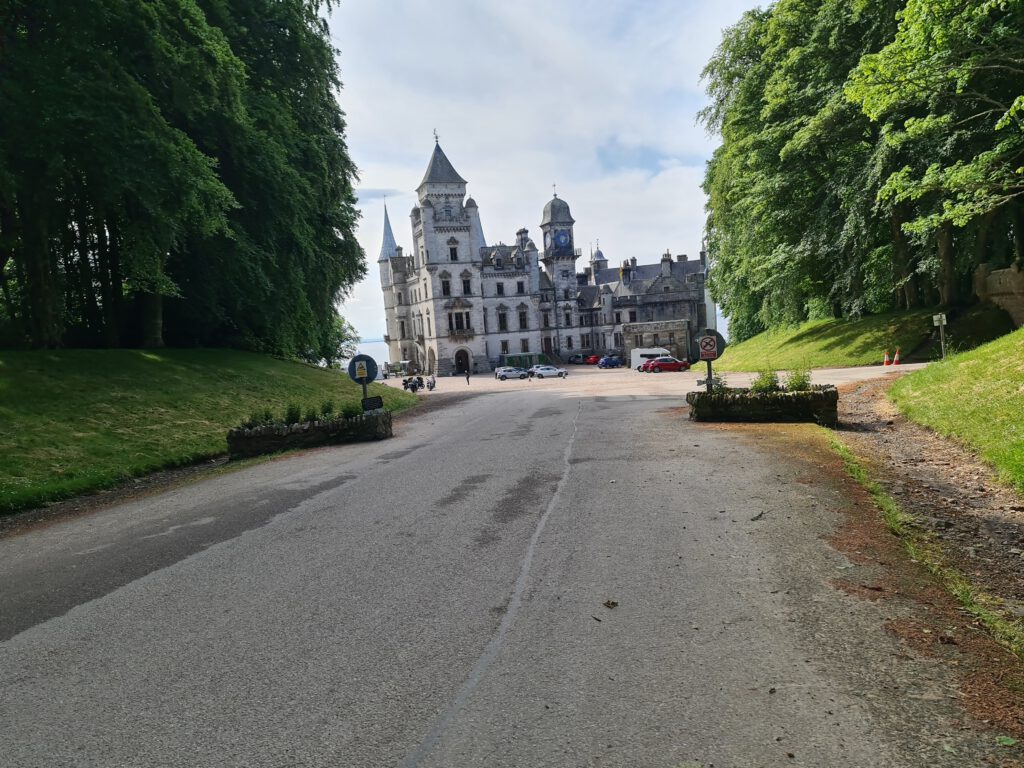
Dunrobin Castle is in my opinion the most fairytale like castle in all of Scotland, yet it is less a castle and more of a mansion or country house designed in the Scottish Baronial style with various influences, all of which was added around the original tower house. Having been the ancestral seat of Clan Sutherland and the Earls (later Dukes) of Sutherland, not just the castle looks like straight out of a fairytale but the views from it are truly magnificent as well, especially on sunny days the whole area looks like something you would only dream of.

Although there are regular changes happening to the castle, it is safe to say that most of it was finished by 1845. Known as the largest house in north Scotland the original tower saw numerous extensions with parts of the tower house only being visible in the interior courtyard, hidden away and easily missed.
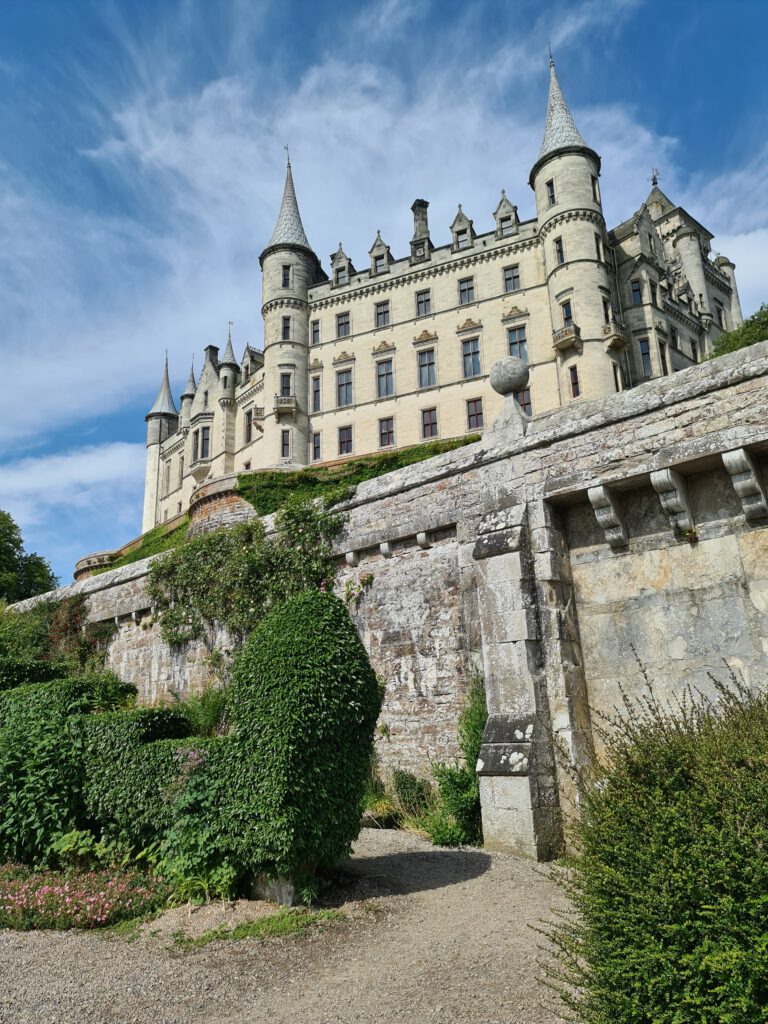
Dunrobin’s 189 rooms include some very old rooms making it one of the oldest continuously inhabited houses in Britain, although the building goes back to the early 13th century, it was only mentioned in 1401 as the stronghold of the family, housing one of the ancient seven earldoms of Scotland to this day. At some point they built one of the most powerful families in Britain, an achievement from many important marriages and territorial alliances, this power was used to support the British troops during the 1745 Jacobite Rising and the Battle of Culloden.

When the lands of Sutherland were granted to Hugh, Lord of Duffus in 1197 by William the Lion, the area of the land was a lot bigger than what can be seen today when looking at a map of Sutherland, reaching down south including Nairn and Moray and north including what now is known as Caithness. With Hugh being an ancestor of the Murray Clan as well there was some connection between the two clans and for sure it was a useful thing in times of war.
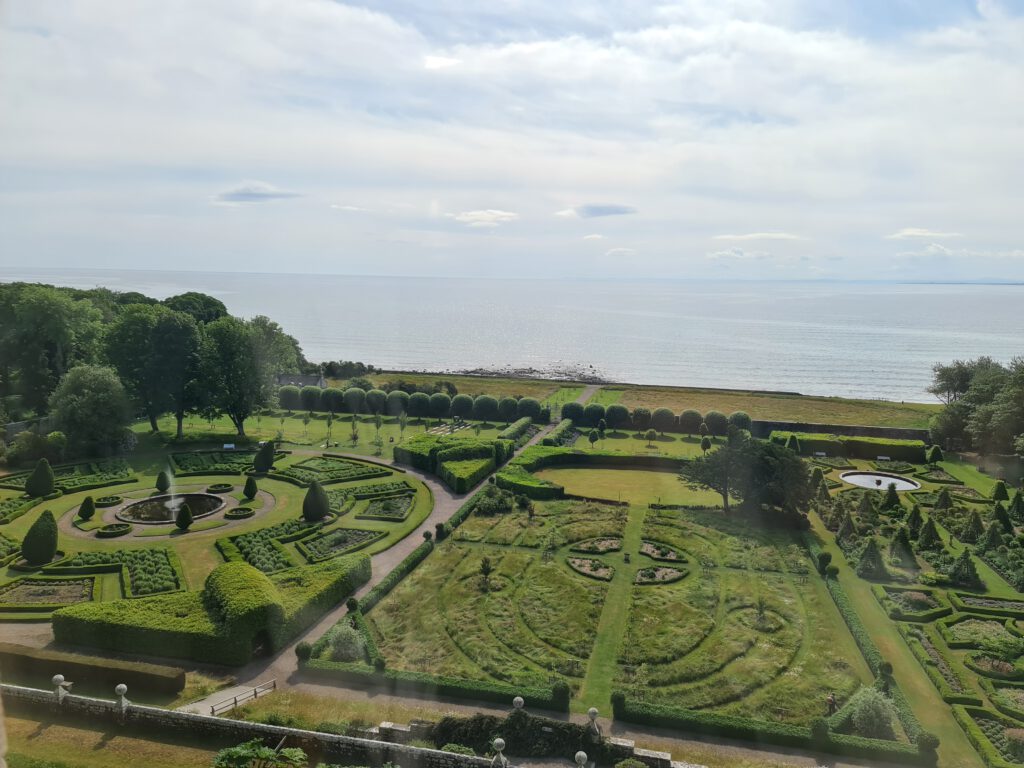
The name originating from ‘South Land’, makes only sense when taking into account that it was discovered and colonised by Norse invaders and probably were more responsible for naming Sutherland than any of the locals. It might have simply been convenient for the locals to keep that name when the Earldom of Sutherland was created for Hugh’s son, William, Lord of Duffus around 1235. It was around that time that a castle was built on the site. This first castle name is a mystery to this day, and it wasn’t until the 6th Earl, named Robert or Robin, that the castles name of Dunrobin was mentioned, origination from Dun Robin which means Robin’s Hall.

William wasn’t just the first Earl but also the start to strong connections with the House of Moray, descending from it via the female line. Having jumped from the first earl over to the 6th really quickly, the in-between was quite rough on the Earls of Sutherland. The 4th Earl, Kenneth, also serving as Regent of Scotland, died on the Battlefield at Halidon Hill in 1333 and the next one, the 5th Earl, William was murdered by the feuding Mackays.
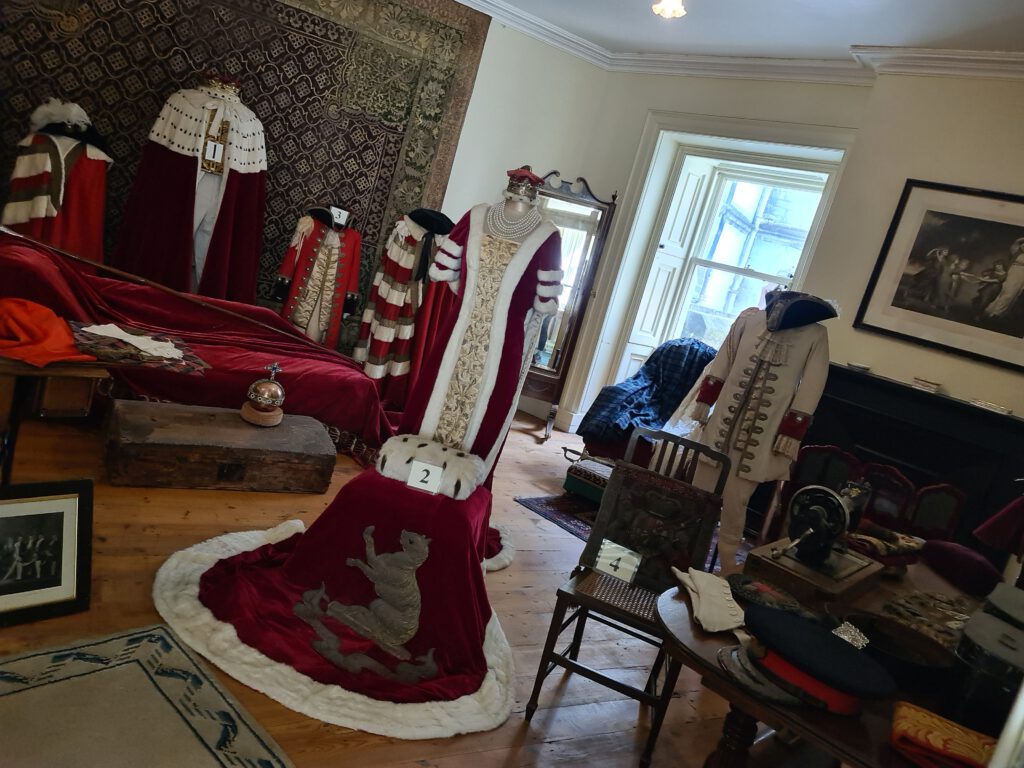
The bloody part of history around the Earls of Sutherland wasn’t over yet though, with Robert the Bruce being involved in some part, by making the Gordons Earls of Huntly in 1445 he also laid the foundation for the Earls of Huntly becoming the Earls of Sutherland during the 16th century. With the daughter of the 8th Earl, Elizabeth, marrying Adam Gordon, upon the death of the 8th Earl in 1508 the title should have passed to Elizabeth’s brother, however, the Gordons didn’t think so and were quick to make both of Elizabeth’s brothers out to be suffering of idiocy, by that gaining the estate four years later.
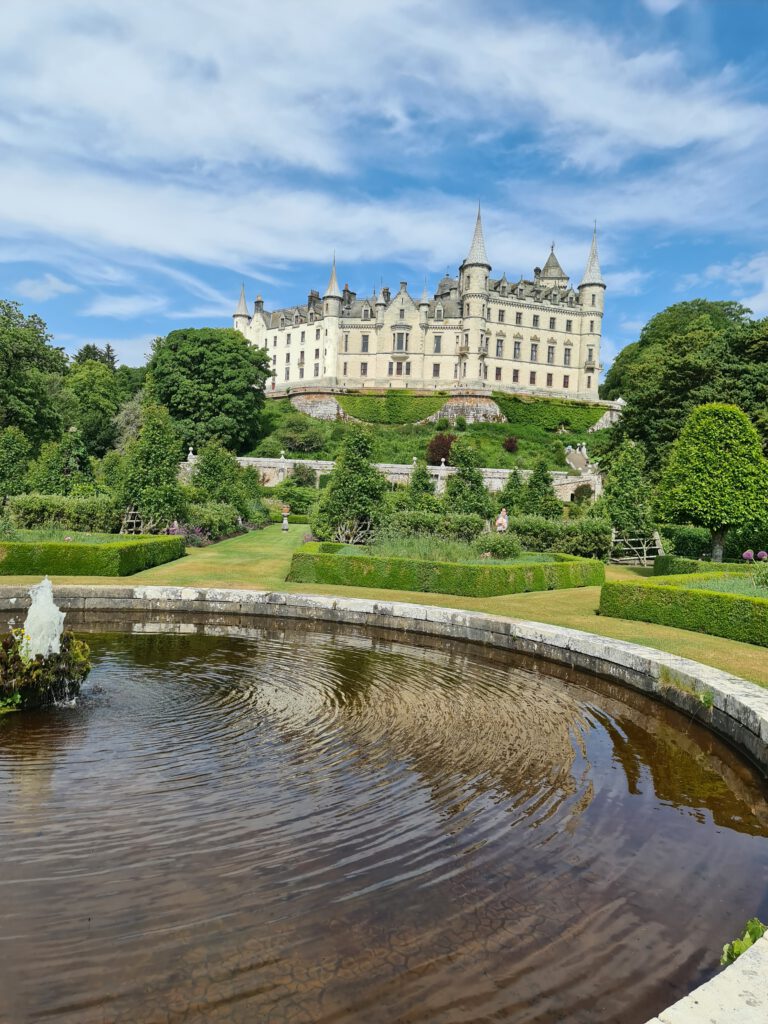
It started some back and forth with Adam Gordon being absent from the castle and it being captured by Alexander Sutherland, the legitimate heir he was, this didn’t last long though and soon the Gordons took it back, placing Alexanders head on a spear, good for everyone to see on top of the castle tower of the time. By that time, Alexander had already had a son, John, who took over his father’s task of regaining the Earldom of Sutherland, attempting to retake the castle in 1550. As his father it didn’t bring John very far, suffering the same faith, dying in the castle garden.
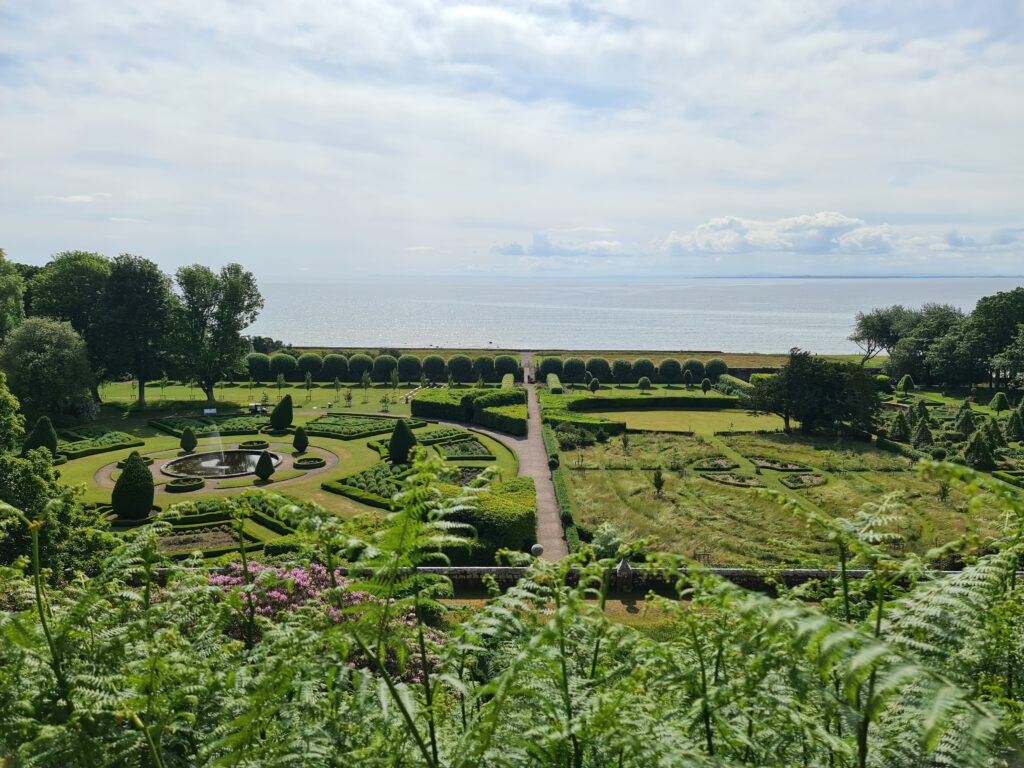
The following century was a calm one, seeing some additions to the ever-growing castle that soon turned into more of a mansion. But the violent times weren’t quite over yet. Some of you might remember the story about Isobel Sinclair poisoning the 11th Earl and his wife at Helmsdale Castle, accidently also poisoning her own son.

And then there came the last Jacobite Rising, although Dunrobin is quite far up north, it was still one of the centres of Jacobite rebellion. Charles and his Jacobites stormed the castle without any warning, it was during that time that the 17th Earl changed his last name from Gordon to Sutherland.
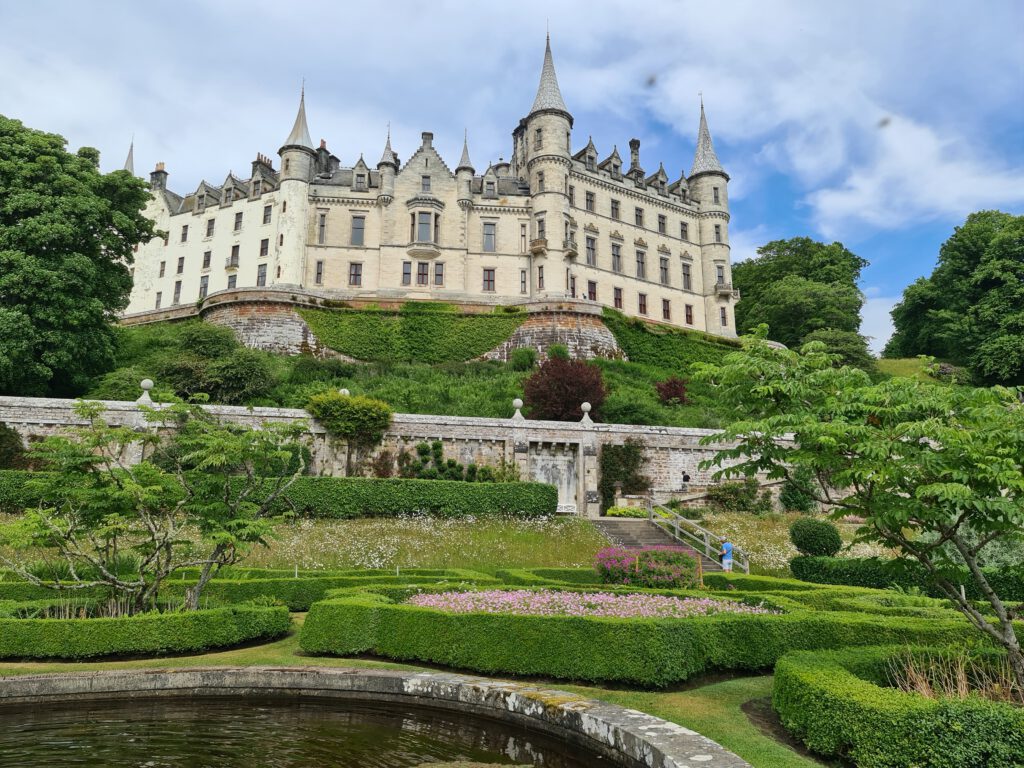
With the 18th Earl there came another break in the line, the house passed to his daughter, again an Elizabeth, who was married to George Leveson-Gower, a politician, later to be created the 1st Duke of Sutherland. It was under him that further alterations were made to the complex before the building as we see it today was instigated under the 2nd Duke of Sutherland.

Although this part is not that common reference of the Dukes of Sutherland it must be mentioned that the Dukedom played a dark and brutal role during the infamous Highland Clearances, sweeping throughout Sutherland and Caithness as well as other parts of Scotland. Instead of being remembered for the good they did throughout the years, with the 3rd Duke being mainly responsible for lots of the north railway line being built, but for the harsh treatment, the cruelty administered during the Clearance.

For the family however, the years coming were quite glamorous, large extensions and remodelling was undertaken by no one else than Sir Charles Barry (architect of the Palace of Westminster) incorporating the 14th century tower in the great mansion, but not only the building was of Barry’s making, the extensive gardens which were based on non-other than those of Versailles, were his work. But they weren’t just based on Versailles, they famously were doubling for Versailles gardens later in the TV series Outlander.

Finished around 1850 much of the new interior was destroyed less than 100 years later in 1915, by a devastating fire. What you can explore today, all those interior designs are the work of Sir Robert Lorimer who started working on it after the end of the First World War, which also saw the end of the castle being used as a naval hospital.
But the aftermath of a war is never cheap, and it wasn’t during the 1920s either, some of the jobs seen as less important were neglected and especially the gardens left in a bad state, over the years things got better.

After the 5th Dukes death in 1963 the male line of the Dukedom was broken once more. However, the Earldom and the estate of Dunrobin went to his niece who to this day is the Countess of Sutherland. The Dukedom was separated at that time and went to a male heir, John Egerton the Earl of Ellesmere, so are the rules of succession.
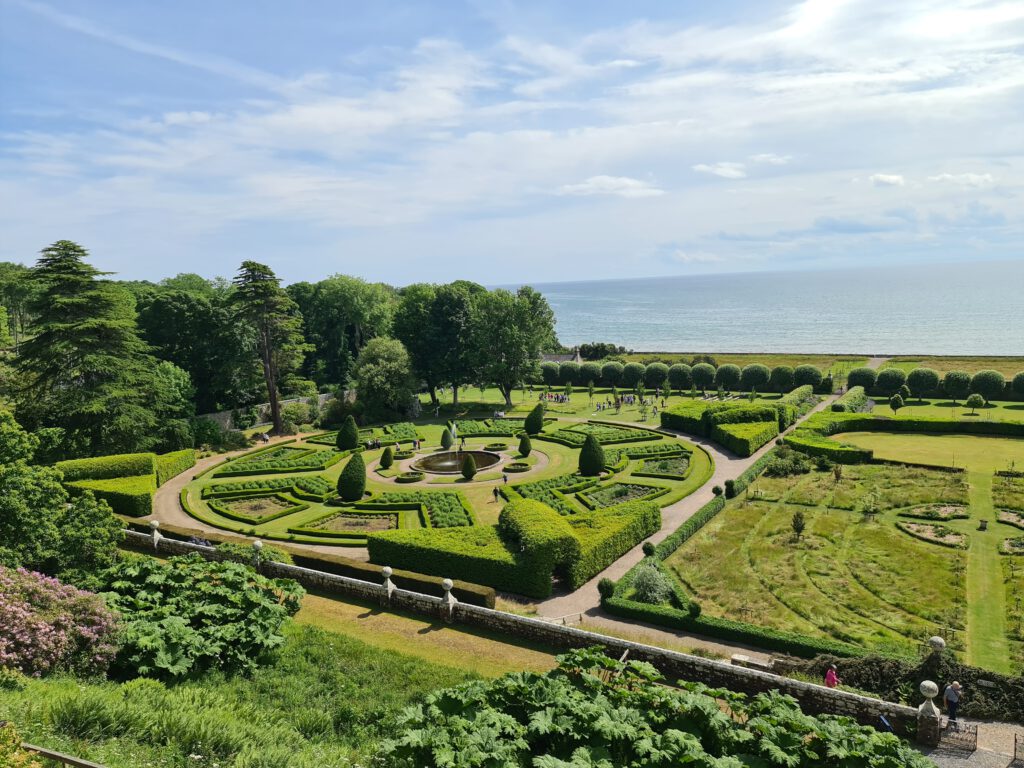
It was the current Countess that opened the house to become a boarding school for boys between 1965 and 1972. When the school was closed, the following year the countess opened the doors of her Highland home to the public. Not all the castle is to be visited, since withing there are still kept some private accommodations for the personal use of the Sutherland family while they are not residing at the House of Tongue or in their London home.
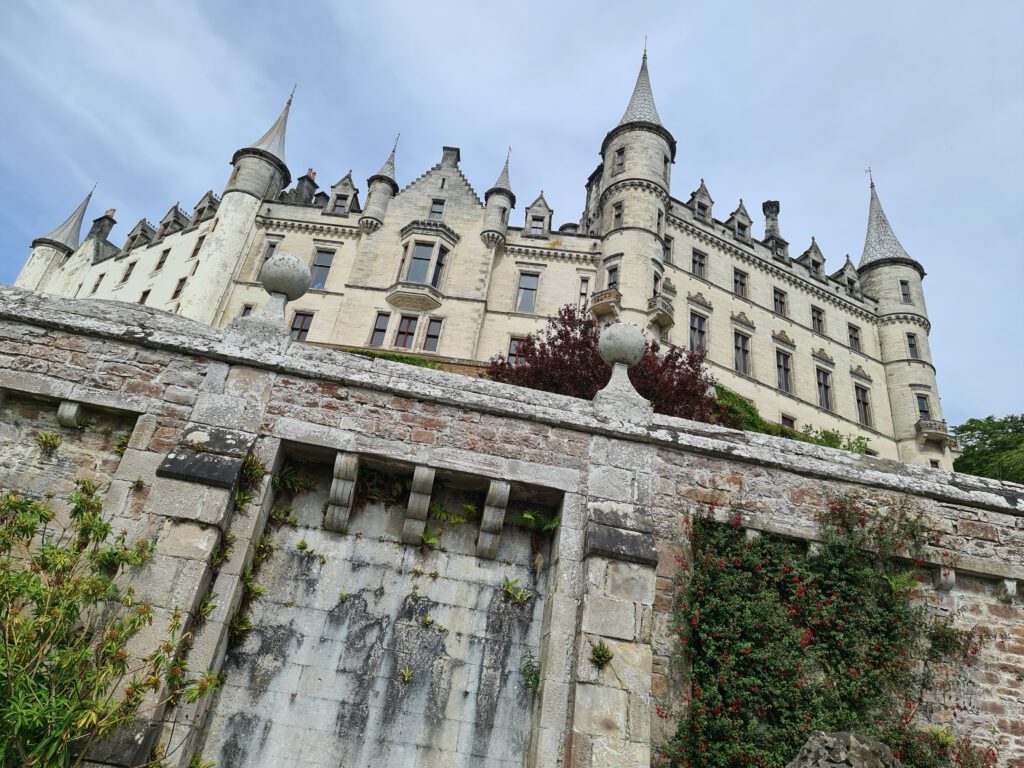
As you will have seen in previous posts, I rarely ever attempt to say anything about the architecture of a place, while I find it stunning, I don’t have an eye for such things and prefer to tell people to witness it for themselves. The special thing at Dunrobin is that although you can’t visit it these days, St John’s Well is incorporated in the courtyard of the oldest castle parts. To this day this well is one of the deepest draw wells in Scotland and by that another historic specialty incorporated in the magnificent Dunrobin Castle.

When visiting make sure to spend a lot of time here, without any rush, explore the building, the extensive gardens as well as the museum, displaying not only animal heads (trigger warning) but also ancient pictish stones all of which is referred to as one of the most remarkable private collections in the British Isles. Also make sure to check out the Falconry display times before your visit.
Coming towards the end of telling you about this amazing place there is my favourite part still to come. Far up in the Highlands there is no wonder about it, a ghost story is connected to some of the rooms inside the castle.

While the 17th century was mostly quiet in 1679 the 14th Earls daughter decided to elope with her lover. Her father of course didn’t approve of the match and imprisoned his daughter in the attic, trying to escape out of the window, by climbing down a rope, she fell to her death, being surprised by her own father’s approach. To this day there are reports of Margaret’s spectre haunting the upper floors of Dunrobin Castle.
Needless to say, the castle as well as the family owning it has seen a fair share of drama, death and war, choosing sides wisely sometimes and poorly other times. I personally find that the Sutherland Clan motto reflects this history very well. “Sans Peur” – Without Fear, appearing on many things connected with the Countess’s Coat of Arms as well as the Clan Crest.

At this point I not only want to advise you to definitely check out the food at the castle alongside everything else and to give a huge thanks for having me at Dunrobin Castle, I enjoyed it a lot and am more than just glad that I got the opportunity to wander around the halls of this old place as well as the gardens, while being granted the honour of telling the story of the place as well as the family.

